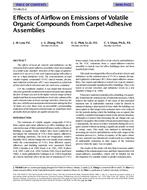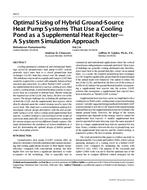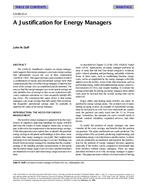The use of a liquid desiccant cooling and dehumidification system in a hybrid configuration shows definite advantages in terms of enhanced coefficient of performance and increased possibility for low-grade heat application. However, to compare the performance of different hybrid systems, a careful and accurate hour-by-hour analysis of annual energy consumption estimates is needed. Prediction of annual energy consumption requires the part-load performance evaluation of each component used in an air-conditioning system. Presents a rigorous parametric analysis of heat and mass transfer performance of a packed-type, counterflow, liquid desiccant absorber at part-load operating conditions. For this purpose, a set of coupled differential equations describing the heat and mass transfer in a packed absorber is solved numerically. Several controlling parameters are identified to analyse their influence on the cooling and dehumidification performance of packed absorbers. Air-side enthalpy and humidity effectiveness are defined and used to report the part-load performance. Finally, the part-load performance as predicted by the numerical model is compared with an NTU-effectiveness model available in the literature. Lithium chloride solution in a counterflow arrangement with air is used in this analysis.
KEYWORDS: year 1996, heat flow, performance, absorbers, desiccants, part load, operations, cooling, air conditioning, comparing, calculating, lithium chloride, heat content
Citation: ASHRAE Trans. 1996, vol.102, part 1, paper number 3967, 349-357, 7 figs., 1 tab., refs.
Product Details
- Published:
- 1996
- File Size:
- 1 file , 930 KB
- Product Code(s):
- D-16543


